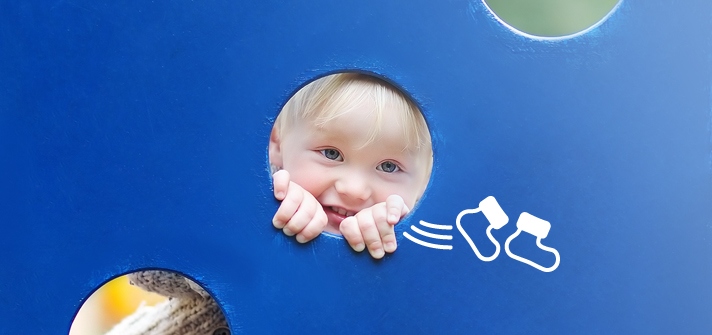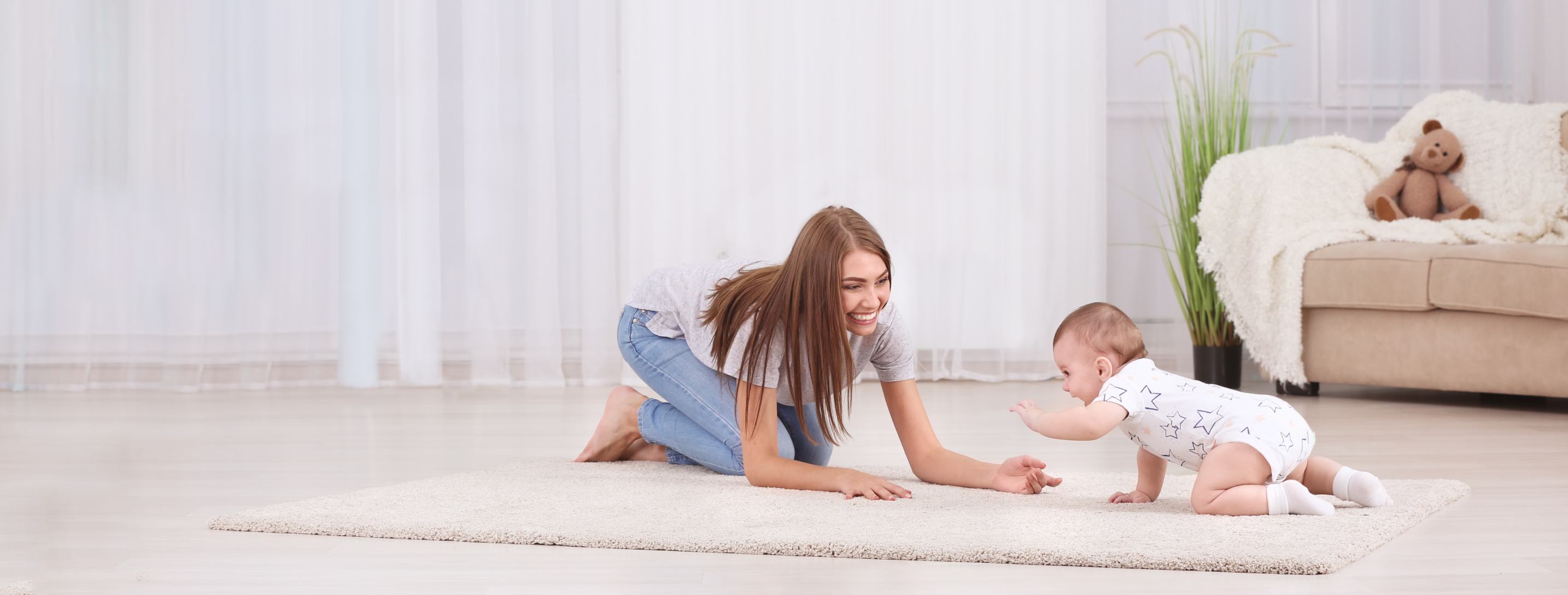























Could screen time increase the chances of my toddler becoming overweight?
Did you know? Young children risk missing out on important outdoor play and activity when their time is spent watching television and in front of screens.

Research has consistently shown a link between activity and healthy weight. Some children who spend a lot of time in front of screens could be less likely to get the recommended amount of activity or outdoor playtime for their age. While it often seems as though toddlers have endless energy and are active all the time, that may not always be true. A recent study measuring the activity of two-year-olds found that the toddlers were inactive most of the time.
Parents’ screen time
Reducing screen time is not just something that applies to children. Research has found that parental encouragement and support is crucial in increasing children’s activity levels, and that the less parents use screens, the less their children will too. So always try to set a good example and minimize the amount of time you spend looking at a screen when your toddler is around. Avoid having screens on even in the background as they can be a distraction.
There’s little doubt that being physically active as a toddler is important for his future health. Now that your toddler is becoming more independent and is capable of more advanced movements, it is a great time to play outdoors together regularly, if you can. He will learn that being active is fun and will look forward to playtime now and as he grows.
Activity guidelines
For toddlers one to two years of age, guidelines recommend at least one to three hours of activity per day. Playtime should include structured as well as unstructured, or free, play. Structured play is when you are directing the play and your toddler is encouraged to follow simple rules; unstructured play is when your toddler is free to be active in whatever ways he chooses. Make time for activity with your toddler throughout the day. It does not need to occur all at one time. Your toddler should only be inactive for more than one hour at a time when he’s asleep.
Sources:
▪ Downing KL, Hnatiuk J, Hesketh HD. Prevalence of sedentary behaviour in children under 2 years: A systematic review. Prev Med 2015; 78:105–14.
▪ Kuzik N, Carson V. The association between physical activity, sedentary behaviour, sleep, and body mass index z-scores in different settings among toddlers and pre-schoolers. BMC Pediatr 2016; 16: doi 10.1186/s12887-016-0642-6.
▪ Wijtzes AI, Kooijman MN, Kiefte-de Jong JC, et al. Correlates of physical activity in 2-year-old toddlers: The Generation R Study. J Pediatr 2013; 163(3):791-9.
▪ Xu H, Wen LM, Rissel C. Associations of maternal influences with outdoor play and screen time of two-year-olds: Findings from the Healthy Beginnings Trial. J Paediatr Child Health 2014; 50:680-6.
▪ Xu H, Wen LM, Rissel C. Associations of parental influences with physical activity and screen time among young children:
a systematic review. J Obes 2015; 2015:546925
Share With:
Recommended Articles

Romesh Jayasinghe
Understanding early childhood developmental psychology
Psychology is the study of human behavior and child psychology is the applied branch of psychology that studies both the normal and abnormal development and...
Read More
Tour of the world’s sleeping toddlers
“How do I get my toddler to sleep?” is an age-old, universally asked question. Find out how other parents are doing it across the globe. Sleep styles can...
Read More

Nimali Buthpitiya
Know and Support Your Child's Development - Developmental milestones of your 12months year old child
With the arrival of a child, your life is transformed like never before. Your days will be shorter, nights longer, home happier and the future worth living fo...
Read More